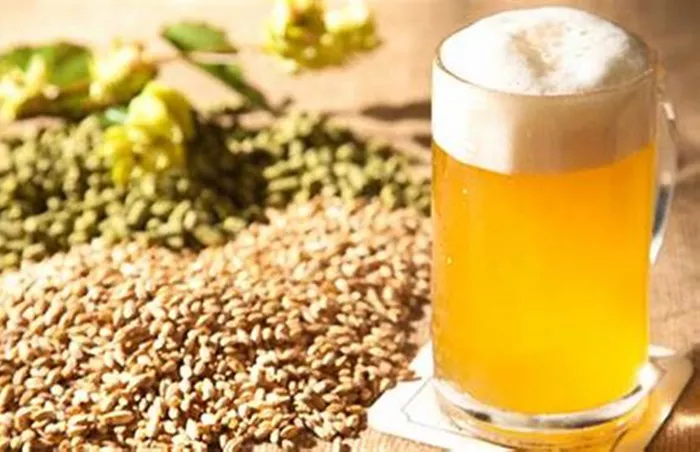Brewing beer at home can be an exciting and rewarding hobby. Many people are drawn to the process because it allows them to create unique flavors and styles. However, a common question among new brewers is, “How long does it take to brew beer at home?” The answer is not as straightforward as it might seem. The timeline for brewing beer varies based on several factors, including the type of beer, the brewing method, and the fermentation process. This article will explore these aspects in detail, helping you understand the time commitment involved in brewing your own beer.
In this guide, we will break down the brewing process into key stages, from preparation to bottling. We will examine the typical timelines for each stage and discuss how different brewing techniques can affect the overall duration. By the end of this article, you will have a clear picture of what to expect when you embark on your home brewing journey.
The Brewing Process Explained
1. Preparation Stage
Gathering Ingredients and Equipment
Before you can brew beer, you need to gather all your ingredients and equipment. This preparation stage typically takes about one to two hours. You’ll need malt, hops, yeast, and water, along with brewing equipment like a brew kettle, fermentation vessel, and bottles. If you are a beginner, consider using a home brewing kit that includes all the necessary items. This can save time and ensure you have everything you need.
Sanitization
Sanitizing your equipment is crucial in brewing. This process ensures that unwanted bacteria do not spoil your beer. You should spend about 30 minutes sanitizing everything that will come into contact with the beer. Use a no-rinse sanitizer for convenience. Proper sanitization can significantly influence the quality of your final product.
2. Brewing Stage
Boiling the Wort
The actual brewing process starts with boiling the wort. This stage usually takes about 60 to 90 minutes. First, you’ll steep your grains to extract flavors and sugars. After that, you’ll bring the wort to a boil and add hops according to your recipe. Boiling is essential for sterilizing the wort and extracting flavors from the hops.
Cooling the Wort
After boiling, you must cool the wort quickly. This step usually takes around 20 to 30 minutes. Using an immersion chiller or an ice bath can help speed up this process. Rapid cooling prevents the growth of unwanted bacteria and prepares the wort for fermentation.
3. Fermentation Stage
Primary Fermentation
Once cooled, the wort is transferred to the fermentation vessel, and yeast is added. This primary fermentation typically lasts between one to two weeks. During this time, yeast will convert sugars into alcohol and carbon dioxide. The exact duration depends on the type of yeast and the beer style. Ales ferment faster than lagers, which may take several weeks.
Checking Fermentation
It’s important to monitor fermentation. You should take gravity readings with a hydrometer every few days. This process helps you determine when fermentation is complete. Generally, fermentation is considered complete when the specific gravity remains constant over two to three days.
4. Conditioning Stage
Secondary Fermentation
After primary fermentation, some brewers transfer their beer to a secondary fermentation vessel. This stage can last anywhere from one week to several months, depending on the beer style. Secondary fermentation helps to clarify the beer and can enhance its flavor. Not all recipes require a secondary fermentation, but it can be beneficial for certain styles.
Cold Crashing and Clarification
After secondary fermentation, cold crashing may take an additional few days. Cold crashing involves lowering the temperature of the beer to help any remaining yeast and sediment settle at the bottom. This process can improve the clarity of the beer, making it more visually appealing.
5. Bottling Stage
Bottling Preparation
Once fermentation and conditioning are complete, you can prepare for bottling. This step usually takes about an hour. You’ll need to sanitize your bottles and caps again. Ensuring everything is clean is vital to prevent contamination.
Bottling the Beer
Bottling itself can take another hour. You will need to siphon the beer into bottles, leaving some headspace at the top. After filling, cap each bottle to seal in the carbonation.
6. Carbonation Stage
Carbonation in Bottles
After bottling, the beer needs to carbonate. This process typically takes one to two weeks. You will add priming sugar to the beer before bottling, which allows carbonation to develop in the sealed bottles. During this time, store your beer at room temperature.
Chilling and Enjoying
Once carbonation is complete, your beer is ready to chill and enjoy. This final step only takes a few hours, but it’s worth the wait after the lengthy brewing process.
See Also: Why is Ginger Beer Called Beer? A Full Exploration
Total Time Commitment
Overall Timeline
When you add up all the stages of brewing, the total time commitment can range from about four to six weeks. This timeline includes preparation, brewing, fermentation, conditioning, and carbonation. It’s important to remember that while some stages can be done concurrently, others require patience.
Factors Influencing Brewing Time
Several factors can influence the overall brewing time. The type of beer you are making is a significant factor. For example, ales generally have a shorter fermentation time than lagers. Additionally, certain recipes may require longer conditioning or aging times, particularly for high-alcohol or complex styles like stouts or barrel-aged beers.
Conclusion
In conclusion, brewing beer at home is a rewarding experience that requires time and patience. The total time from start to finish can range from four to six weeks, depending on the beer style and methods used. Each stage—preparation, brewing, fermentation, conditioning, and carbonation—plays a critical role in the final product. By understanding these timelines, you can plan your brewing schedule effectively.
With practice, you will become more efficient and possibly even shorten your brewing time while maintaining quality. The joy of sharing your homemade beer with friends and family makes the wait worthwhile. Happy brewing.
You might be interested


